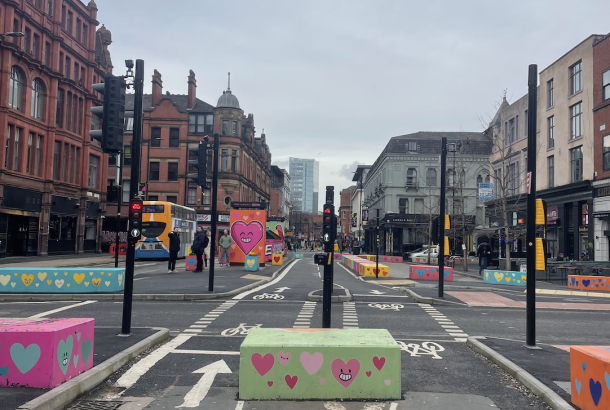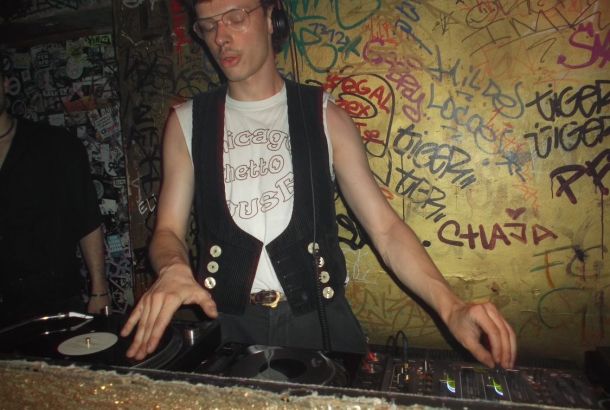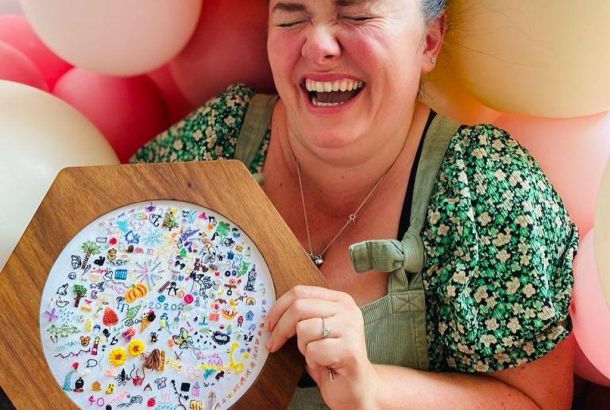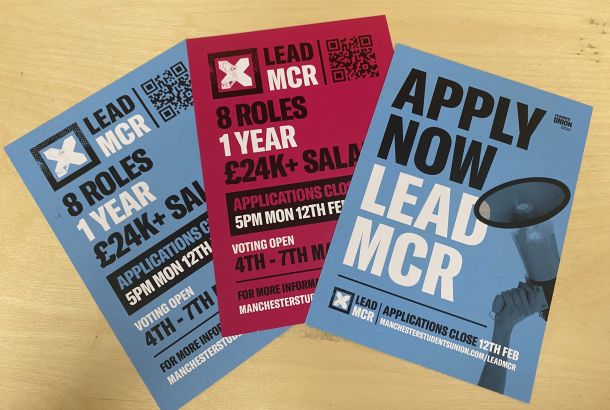Talking about statues: Takings from Creative Manchester’s discussion on statues and public murals
By nicolamiles

On the 5th October, Creative Manchester brought researchers from Bristol and Manchester together to reflect on changing conversations on public history and the inclusivity of these discussions. The talk was centred around the toppling of the statue of Edward Colston during the George Floyd protests in Bristol in 2020, and the cultural conflict that came along with the removal of the statue.
Is it right to remove statues? Once a statue has been erected, is it there forever? Can we ever change our minds or reassess depending on new information? Where should the statues which are removed go? What do they become? Who should decide and be part of the conversation? David Olusoga, the professor of Public History at the University of Manchester and the chair of the discussion, opened by asking the key questions surrounding the events which led up to the talk.

In 2020, statues were pulled down all over the world from India to Columbia, including a statue of Edward Colson in Bristol, the toppling of which Olusoga thought was perfect.
“One thing we learned in the year 2020,” Olusoga explained, is that “as a nation we do not know who the statues which live amongst us are, nor what they represent”.
Colston was a merchant, involved with the Royal African Company who were responsible for transporting over 84,000 African men, women and children to the Caribbean and the rest of the Americas. Olusoga explained this to be emblematic of how statues can be dishonest and speak to histories that do not reflect reality.
Statue erecting was not always apolitical
Olusoga revealed that at a meeting discussing the renaming of a block of houses named after Cecil Rhodes in Camden, the councillor who had insisted on naming the houses after Rhodes had done so because he was worried there was an increasing lack of enthusiasm towards the empire. Therefore, the minutes from the council’s meeting in 1957 had shown that the installation of names and statues in public spaces were not always apolitical.
How can we move beyond the polarised discussions surrounding statues?
Olusoga asked this to Dr Joanna Burch-Brown, one of the panellists who had been at the centre of the commission investigating Bristol’s history. Dr Burch-Brown responded by outlining the polarised dynamic the nation currently finds itself in due to each side thinking that their morals, rationality, and history are under threat, but finding the other incomprehensible.
Dr Burch-Brown believes a radical stance is to move towards a more empathetic understanding in regard to both groups. This involves finding the positive intentions of people’s arguments on both sides. When using this approach, Dr Burch-Brown found that people have childhood memories surrounding Colston such as attending a school named after him. New information about Colston’s involvement in the slave trade disrupts these memories and people can no longer take pride in their local identity.
“There are these innocent parts of people’s identities that get caught up in the crossfire in these conversations”, said Dr Burch-Brown. She said that showing empathy towards those who are in this situation enables them to open up and listen, taking in what is being said rather than prompting reactionary responses.
Is the media’s portrayal of a ‘culture war’ a true reflection of reality?
Another panellist, Jennine, who works with Manchester City Council to consult the mural and public art landscape in the city, saw the toppling of Colston as a catalyst to have open discussions with residents in Manchester. When talking to local people, she found people were hesitant to pull statues down but wanted to know the full history of the people whom the statues depict and whom streets and buildings are named after. Jennine believed the debate surrounding the issue was not as extreme as social media and news outlets presented it to be. People ultimately just wanted to know the truth.
How have young people engaged with these conversations despite an overpowing tension of culture wars?
Dr Sadia Habib stressed that the narratives of culture wars in the press stifle real-life conversations about the meaning people attach to statues and the emotional impact they have. Dr Habib, who is part of the University of Manchester’s research programme, CoDE, helped set up workshops for young people to have real and honest conversations. She said these workshops were important to engage with communities whose voices have often not been heard within these debates, and to enable young people to explore these debates in creative and critical ways.
Rowan took part in one of these workshops in London and said they made her feel empowered to share her own views in her city. At the workshops, she looked into the life of Robert Clayton and found he, along with Colston, was a member of the Royal African company. Rowan shared she felt disconnected when looking up at his statue. She doesn’t feel proud to see Clayton being idolised in her city and instead sees a harsh reality.
Olusoga mentioned that he recognises a generational divide that determines one’s views towards seeing statues as either tokens of power or as representations of history. Rowan believes our generation hasn’t ignored statues like previous generations may have because of the Black Lives Matter movements. The movements have brought to the forefront conversations about racism and to Rowan, colonial statues act as a visual aid to the conversation. Black Lives Matter’s large presence on social media has also enabled information about the past to circulate and grab young people’s attention.
Coming to terms with the truth
For Cleo, growing up in Bristol, the statue of Edward Colston was hard to ignore. She grew up aspiring to be a ‘Colston girl’ by attending her local girl’s school which was named after him. Every year she’d celebrate Colston day with her peers in which the school made no attempt to tell her and fellow pupils the connections Colston had with the slave trade. She remembers in 1996 seeing communities of Afro-Caribbean heritage demonstrating for the statue to be taken down. It was then when she was faced with the ugly truth about Colston’s history.
Cleo detailed the things she found out and described how disturbed she felt when realising “my school period was a time where I’d publicly celebrated the man who took part in enslaving my ancestors”. Cleo recalled her headteacher dismissing the new revelations after asking her about it. This led up to Cleo becoming one of the founders of the campaign group Countering Colston in 2015. The group, which consists of a network of activists, artists and academics, campaigns against the public celebration of Colston.
So, what happens to the statues once they’re taken down?

In mind was the statue of Colston which was toppled down and thrown into Bristol Harbour by protestors during the Black Lives Matter demonstrations. Ray, Head of Collections and Archives at Bristol Museums, highlighted that the toppling down of Colston’s statue was an important event. “Museums immediately had to be involved”, he stressed, Bristol’s museums collected the banners from the protests to contextualise the event.
Since the mayor of Bristol decided Colston should be retrieved from the harbour, his statue was placed into the ownership of Bristol Museums. Ray emphasised the museums wanted to give the public the opportunity to decide what to do next with the statue. They did this by putting the statue back into the public’s eye in the M Shed museum. The museum decided to preserve the statue which included leaving the graffiti on it. “We wanted to put up the display to be as factual, honest and transparent as we can make it”, said Ray. The graffiti and the damage on the statue conveyed a visual story that is now part of its history.
Dr Burch-Brown added that the Bristol museum put out a survey for the public to say what they think should happen to the statue. They received 11,000 responses and are currently in the process of analysing the data. They will use the responses to determine the statue’s future and to offer a picture of the social attitudes surrounding the statue. Dr Burch-Brown also expressed that using citizen juries would be a good step for councils to take in the future, as it would allow ordinary people, representative of the wider public, to determine the fate of a public statue.
Jennine mentioned there are currently no plans for statues in Manchester to be officially removed.
The talk was essential in attempting to the bridge the gap between both sides in the debate concerning the future of colonial statues in public spaces. It emphasised the need to for all sides to listen to each other and for the voices of the young and marginalised to be recognised within decision making by councils. The talk also provided a space for young creatives to express their viewpoints and feelings towards the issue through poetry. As a student, I left feeling inspired and encouraged to explore my own views surrounding the topic in more creative and critical ways.







